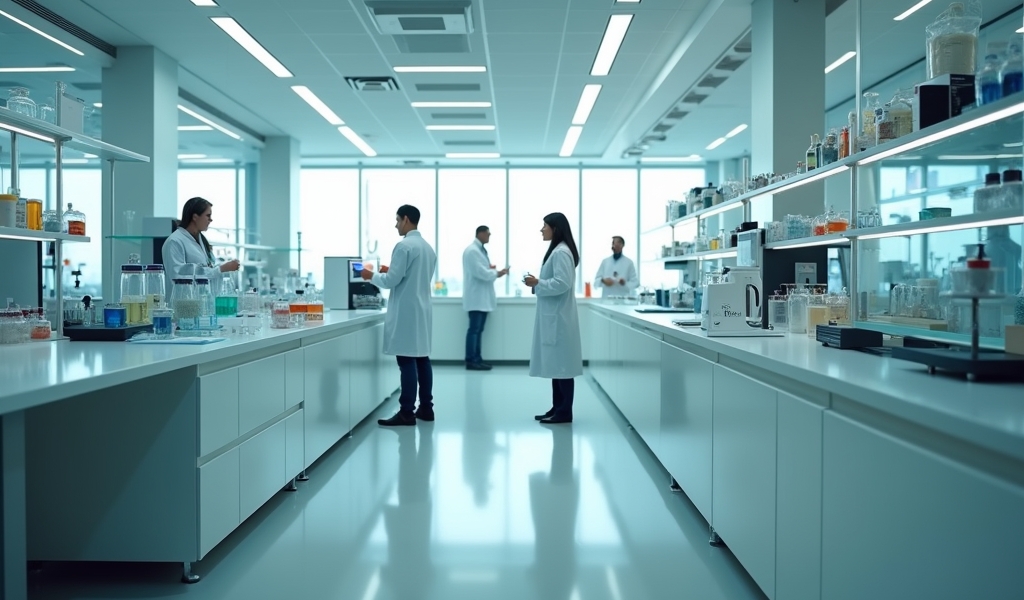Table of Contents
- Article Summary
- The Continuing Significance of Small Molecules
- The AI Revolution in Drug Discovery
- Telehealth Advantages in Modern Pharmaceutical Care
- Addressing Supply Chain Challenges
- The GLP-1 Revolution: Implications for Telehealth
- Sustainable Practices in Pharmaceutical Development
- Conclusion
Article Summary
In the recent Drug Digest video from Pharmaceutical Technology, industry experts Steve Barr from SK pharmteco and Prasad Raje from LGM Pharma discussed the current state of small molecule APIs, excipients, and ingredients in pharmaceutical development. The conversation highlighted that small molecules remain dominant in the pharmaceutical landscape, accounting for 69% of FDA-approved drugs in 2023 and approximately 72% of new molecular entities approved through August 2025. The discussion covered important challenges facing the industry, including supply chain complexities, regulatory hurdles, artificial intelligence integration, and sustainable practices.
The experts also delved into the GLP-1 receptor agonist phenomenon that has taken the industry by storm, exploring how small molecules might play a role in this space traditionally dominated by peptide-based injectables. The article offers valuable insights into how the pharmaceutical industry continues to evolve while maintaining the core significance of small molecule development.
The Continuing Significance of Small Molecules
As a telehealth network dedicated to accessible wellness solutions, Dr Telx finds the continued dominance of small molecules in pharmaceutical development particularly encouraging. The statistics shared in the article – 69% of FDA approvals in 2023 and 72% so far in 2025 being small molecules – confirm what we’ve observed in our telehealth practice: small molecules remain the foundation of modern pharmacotherapy.
This prevalence matters significantly for telehealth practices. Small molecules typically translate to oral medications that patients can easily administer at home without specialized training or equipment. This aligns perfectly with our mission to provide accessible care that empowers patients to manage their health conditions independently.
Moreover, as noted by the industry experts, small molecules generally offer cost advantages compared to biologics and peptides. In our telehealth practice, medication affordability directly impacts adherence rates and treatment outcomes. When patients can access more affordable small molecule options, they’re more likely to maintain their prescribed regimens without financial barriers interrupting their care.
The AI Revolution in Drug Discovery
The article’s discussion of artificial intelligence in drug discovery resonates deeply with our approach to telehealth innovation. At Dr Telx, we’ve witnessed firsthand how AI and machine learning applications are transforming healthcare delivery and personalization. The pharmaceutical industry’s adoption of AI for drug discovery represents a parallel evolution that will ultimately benefit our patients.
As mentioned in the article, generative AI is accelerating de novo drug design while predictive modeling enhances our understanding of drug properties before physical testing begins. This means more efficient development of targeted therapies with potentially fewer side effects – a significant advantage for telehealth providers who must carefully consider medication profiles for remote patient management.
The prediction that 25-35% of new molecular entities in development have AI-assisted origins suggests we’re entering an era of smarter drug design. For telehealth providers like Dr Telx, this translates to an expanding toolkit of medications designed with greater precision for specific conditions, potentially requiring less trial-and-error in patient treatment plans.
Telehealth Advantages in Modern Pharmaceutical Care
While the article focuses on pharmaceutical development, we at Dr Telx recognize the natural synergy between telehealth and advancements in small molecule medications. Our telewellness approach is particularly well-positioned to leverage these pharmaceutical trends in several ways.
First, the oral administration route common to most small molecule therapies aligns perfectly with remote care models. Patients can safely start and maintain these medications with virtual supervision, expanding access to care for those in remote locations or with limited mobility.
Second, telehealth platforms excel at the continuous monitoring necessary to optimize medication efficacy. Through regular virtual check-ins and digital monitoring tools, Dr Telx providers can track patient responses to small molecule therapies and make timely adjustments – a critical advantage as medications become more precisely targeted.
Third, telehealth providers can rapidly integrate new medications into treatment protocols as they become available, without the institutional delays often seen in traditional healthcare settings. This agility becomes increasingly valuable as AI accelerates the pace of pharmaceutical innovation.
Addressing Supply Chain Challenges
The supply chain concerns highlighted in the article directly impact our telehealth practice at Dr Telx. When experts note that “the manufacturing of generics and the supply chain is becoming more and more tricky because of geopolitical reasons,” we recognize this as a tangible challenge for our patients who rely on consistent medication access.
Telehealth networks like Dr Telx have developed strategies to mitigate these supply chain vulnerabilities. Our digital infrastructure allows us to quickly identify alternative therapeutic options when primary medications face shortages. We’ve established relationships with multiple pharmacy networks to increase sourcing flexibility when specific medications become difficult to obtain.
Additionally, our telehealth model facilitates transparent communication about medication availability issues. We can proactively alert patients to potential shortages and work collaboratively to develop contingency plans, reducing anxiety and treatment disruptions.
The GLP-1 Revolution: Implications for Telehealth
The article’s discussion of GLP-1 receptor agonists and their unprecedented market success has particular relevance for telehealth providers. At Dr Telx, we’ve observed firsthand the growing patient interest in these medications for diabetes management and weight loss. The experts’ suggestion that small molecule alternatives to injectable GLP-1s could emerge represents an exciting possibility for telehealth-based treatment.
As Prasad Raje noted, “If one could convert semaglutide, tirzepatide molecules itself, or like molecules with equal efficacy and results via either solid dosage, traditionally the small molecule part, then it would be even more accepted or more readily available, driving cost further down.” This potential shift would significantly enhance the telehealth delivery model for metabolic conditions.
Steve Barr’s observation that oral products are “easier to administer, and in terms of patient preference… typically preferential to the injectable” aligns perfectly with our telehealth experience. Patient adherence improves with simpler administration methods, and telehealth monitoring can be particularly effective with oral medications that don’t require in-person administration training.
Sustainable Practices in Pharmaceutical Development
The sustainable practices discussed in the article reflect values that Dr Telx strongly supports in our telehealth operations. Environmental sustainability in pharmaceutical production ultimately contributes to the long-term health of our patients and communities.
Telehealth inherently supports sustainability through reduced transportation emissions, decreased medical waste from in-person visits, and lower resource consumption compared to traditional healthcare settings. When combined with pharmaceuticals developed through sustainable practices, telehealth represents a comprehensive approach to environmentally responsible healthcare.
As pharmaceutical companies adopt more sustainable manufacturing methods, Dr Telx remains committed to highlighting these advancements to our patients. We believe that environmental stewardship is an essential component of the holistic wellness approach that defines our telehealth practice.
Conclusion
The insights from Pharmaceutical Technology’s Drug Digest video underscore that small molecules remain the backbone of pharmaceutical innovation despite the growing prominence of biologics and peptides. At Dr Telx, we see tremendous opportunity in these developments to enhance our telehealth services with increasingly effective, accessible, and affordable medication options.
The integration of artificial intelligence in drug discovery promises to accelerate the development of targeted therapies that can be effectively managed through telehealth platforms. Meanwhile, the potential for oral alternatives to injectable medications like GLP-1 agonists could dramatically expand the range of conditions treatable through remote care models.
As we navigate supply chain challenges and embrace sustainable practices, Dr Telx remains committed to leveraging pharmaceutical advancements to provide accessible, personalized care through our telehealth platform. The future of healthcare lies at this intersection of innovative medications and digital delivery systems – a future we’re actively building for our patients every day.

